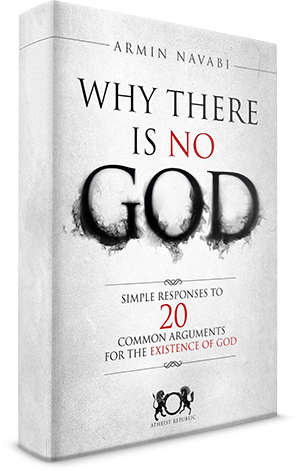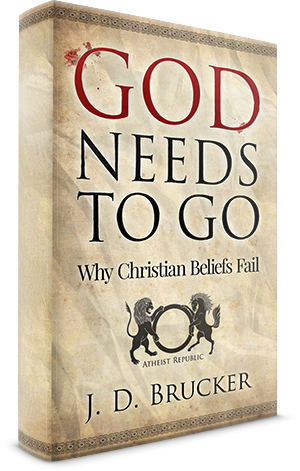
A recent experiment with a box of flour yielded surprising, nay shocking, scientific results: cracks in the vibrated material resulted in a high energy electrical discharge. The experimenter doesn’t understand why this is so, as it’s never been observed in the laboratory before, and there is no immediate explanation for it in the current understanding of applicable scientific theories. Pretty cool stuff, right? But before you run off to your kitchen to empty a bag of flour into a pan to try this for yourself, let me explain a bit more.
If this had happened in a religious context, it could have been seen as a miraculous event, like the Hindu images of Ganesha supposedly drinking milk – viewed as miraculous until someone remembered surface tension and capillary attraction; or in the secular case, when the well-known reporter – but obvious city boy – Charles Kuralt broke a story on US national news (this is pre-internet and pre-cable TV) about an amazing swimming pig, only to be told by every farmer in the country that all pigs could swim (but they still can’t fly).
So, how would science and religion treat this electricity-from-flour event?
1. Repetition
Science requires that all experimental evidence be capable of replication. If you can’t make it happen again, then it probably didn’t happen the way you thought it did in the first place. Single occurrences are chalked up to experimental error, such as equipment failure, measurement error, undergraduate lab assistants, interference by unintended sources, mistakes in calculation or tabulation, gremlins, etc.
The religious, except in the case of our milk drinking Hindu statues, don’t usually require duplication, but that is not always the case. The “miracle” of the Greek “Holy Fire” occurs every year and has been going on for at least 1,200 years in the Church of the Holy Sepulchre, in Jerusalem, on the night before Greek Orthodox Easter commences. The fire supposedly comes from the tomb of Jesus, and every year it never fails to light a brand or candle – but there are no outside observers of how this actually happens. You can see it for yourself, as it is usually broadcast live (this is a short video, but I’ve seen much longer ones of the whole ceremony).
Personally, I think there is someone or something in the tomb which is used to light the candles, but since those officiating don’t let you near this during the event, there is as yet no way to prove this and the would-be debunkers can only speculate. If someone can ever get a cam in there and watch the Patriarch whip out his Zippo lighter, then we will have proof.
There is also the annual event, going on since the 14th century, of the dried blood of St. Januarius liquefying in Naples. It doesn’t always do this, and when it fails to do so, people fear some natural calamity. And there are a number of others which don’t get as much publicity, so duplication is not necessarily a dividing line between the miracles of science and of religion.
For the religious, normally, a miracle is something that happens once, by definition. It’s an indicia of God’s interaction with his creation and is his way of sending some sort of sign or message to the faithful – if they have the wit to understand it. It would, of course, be much simpler to just write the message in the clouds or make it magically appear on everyone’s forehead, but God is not known for being obvious anymore. Indeed, the fact that a “miracle” happens only once is often for the faithful proof of it being a miracle in the first place.
So, for most unexplained events, science would be dismissive of any that cannot be repeated, but religion would not necessarily do so, although some religious “miracles” are repeated.
2. Third Party Observation
This is the most critical factor. Science says that anyone, anywhere, using the same apparatus and in the same conditions should be able to duplicate the experimental results. Sadly, this is now a major problem in the international scientific community and the results are pretty appalling. Perhaps this is due to the “publish-or-perish” mentality at many academic institutions, or the link between grant money and publication success. But science needs to clean up its act in a major way.
Still, the scientific principle is sound, and it is still the ideal in the discipline (if not in recent practice). Remember the hubbub about cold fusion years ago? The results were duplicated at the original laboratory, but in very few others. Repeated trials under more rigorous conditions resulted in a steady stream of unfavorable results, and most academics abandoned the pursuit. But now, it is being re-examined again in some quarters. If you are American, some of your tax dollars are going into research in this field.
But with religious miracles, there has never been a case of replication by third parties, except perhaps with the Hindu milk drinking statues and of course with the huge number of weeping statues and paintings, mostly in the Catholic faith. These claims are just too numerous to go over in any detail, and are happening all the time. Here is a recent one, but there could be a good explanation in terms of the statue’s construction at least for the statues’ initial “weeping”. The explanation for weeping by paintings is not so straight forward, and weeping over protracted periods of time, say every year, requires ongoing complicity of the faithful in the fraud, as with the aforementioned Greek Holy Fire.
The religious claim that their occurrences are inherently not repeatable by third parties, by reason of the fact that it is a “miracle;” an abrogation of the natural laws of science by the Divine as a demonstration or sign to the faithful. “Obviously,” they will decry, “the miracle will not reoccur for a non-believer.” But they don’t occur for all believers, either. God works in mysterious ways, and not all are worthy…. When there are scientific or archaeological discoveries that conflict with earlier religious dogma, then the beliefs are modified or the holy words are reinterpreted or conveniently ignored, like the passages in the Hebrew Bible indicating a belief in a flat Earth. In extreme cases, such as with fundamentalists, reality is ignored or rejected.
Science views an anomaly as an undiscovered phenomena, or as evidence, in extreme cases, of a failure of current scientific theories to adequately explain the natural world. This was the case when it was discovered that the universe was expanding, and before that, when the blurry stars in the sky turned out to be other galaxies. The understanding of the laws of nature can and must change to fit with observable evidence.
3. Explanation
For the religious, the miraculous event is the end of an investigation, not the start of one. The “proof” is the action, and the cause is pre-concluded as being attributable to the Devine. For the religious, the next step is the interpretation of the occurrence, not an examination of its instigation.
Scientists usually want to know how the action occurs, before they look to its consequences. In some cases, however, this is not true. In the case of neutrinos and the Higgs Boson, and now with dark matter and dark energy, the event being sought (the identification of the particle or energy source) is being driven by the mathematical assumption that it exists. This situation arises when accepted theories do not agree with new observations, and scientists seek to preserve the theories in their current form by postulating the existence of previously unknown matter or forces. Ether used to be considered as real by many for the same reason, as was phlogiston (and I would put gravitons, the hypothetical fundamental particle that effectuates the force of gravity, in this list as well). For neutrinos, there was no physical evidence of its existence before the investigation was started (see my earlier blog discussing neutrinos) and it certainly did not manifest itself in any normal observations. No one “saw” a neutrino and said, “hey, I wonder what that is?”
But for scientists, it’s not enough to see the result, they seek to understand its rationale. But this doesn’t always work. Just ask a particle physicist whether an electron is a particle or a wave, and you will get an explanation that it is both and neither. How it does this, like quantum entanglement (Einstein’s “spooky action at a distance” which he famously disbelieved), is really unexplained except through the mathematics of quantum field theory, although the actions themselves have been repeatedly tested and verified. Or why there are only two electric charges, positive and negative, as no theories explain how there are only two. This one always gets physicists testy, as they resort to explanations such as “no one has ever observed more than two,” which when you think about it is a pretty lame answer. I am told that some versions of string theory address this issue, but I can’t verify that, as my math skills are not up to the task and string theory gives me a headache – just like calculating the number of angels balanced on the head of a pin. And how do you account for the fact that particles of antimatter are indistinguishable from particles of matter moving backwards in time, according to the Feynman-Stueckelberg interpretation? (See an interesting examination of this issue.)
But outside of quantum theory, scientists generally consider themselves able to identify an explanation for any action, and weeping statues, liquefying 1,000+ year old blood, and spontaneously igniting candles should all be capable of examination and explanation – even if the explanation itself may be in the form of a negative; i.e., “we don’t understand how it does this, but we can confirm that it does happen in the manner understood.” The religious won’t take this step, and therefore can offer no explanation other than “Divine intervention.” So the religious have nothing to learn from repeated “miracles” other than trying to understand whatever God’s cryptic message is supposed to be in causing oil or blood to leak from the eyes of some porcelain object.
4. Understanding
As I have noted above, in science, explanation does not always come with understanding. My favorite quote on this point comes from Nobel winning physicist Richard Feynman:
Richard Feynman, the late Nobel Laureate in physics, was once asked by a Caltech faculty member to explain why spin one-half particles obey Fermi Dirac statistics. Rising to the challenge, he said, "I'll prepare a freshman lecture on it." But a few days later he told the faculty member, "You know, I couldn't do it. I couldn't reduce it to the freshman level. That means we really don't understand it." - Richard Feynman.
Understanding involves verification. For science, that is a simple matter of replication; can the result be duplicated. The result is the conclusion, although it may lead into new experiments or a pursuit of a deeper understanding. Such was the discovery by J.J. Thomson of the electron in 1897, which led to a desire for a better understanding of the atom’s nucleus achieved in subsequent decades. There is nothing beyond this. Science famously, and somewhat mistakenly, is not the answer to the “why” questions, but to explain the “what” and the “how” questions. It is primarily a description of the universe, not an explanation of why it works in one way, as opposed to another. There are three forms of electrons, differentiated by mass: the electron, muon, and tau. There is no accepted theory which says why there are only three and not two or eight.
But for the religious, there is an understanding beyond the conclusion of the event. The statue of the Virgin Mary wept… because God ordained it to be so… so that…why? And the “why” is where you can have many different perspectives. The miraculous event can be a sign to prove God’s compassion, or to give a sign to believers in troubled times, or to show God’s grief at man’s latest iniquity, like allowing gay marriage or legally charging the Catholic Church with child abuse, etc. There are usually many understandings and interpretations of the miraculous event unless the event comes with its own interpretation, as with the Fatima prophecies for the Catholic Church.
In conclusion, is there any common ground for the miraculous as between religion and science, or are they hopelessly at odds with each other? They both claim to appreciate the majesty of such an event, and they both seek to understand it. But, put simplistically, while science seeks the “how” of the occurrence, the religious jump to the “why” assuming the “how” to be a foregone conclusion. It is not a conflict, so much as a total avoidance of each other’s raison d’etre. There is a role for philosophy in our lives, as it’s unalterably a human inclination to seek to understand a meaning in an occurrence, even where none exists, but the religious view of the miraculous fatally ignores the element of reality that is intrinsic to all such events. The religious miss the magnificence of reality in preference for the phantasm of the Divine.





























